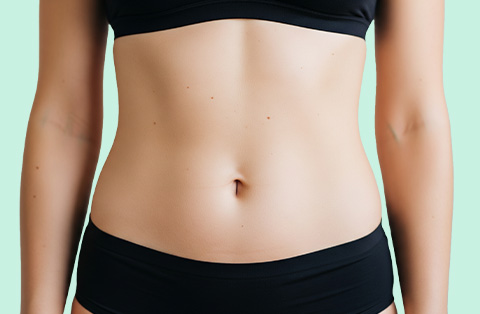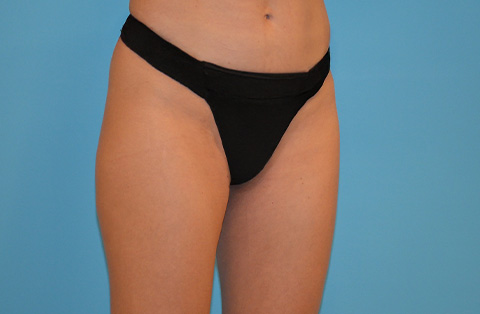Dealing with an apron belly can be both physically and emotionally challenging. This condition, characterized by excess skin and fat hanging from the lower abdomen, is often graded into five different categories based on its severity. Each grade has unique characteristics that can affect mobility, comfort, and overall health.
Understanding these grades is crucial if you're seeking treatment or exploring solutions. In this article, we'll walk you through the five grades of an apron belly, helping you identify where you might fall and what options are available to manage or reduce it.
Classification of Apron Belly Grades
The apron belly is classified into five grades based on how far the excess skin and fat extend over the abdomen and other body areas.
Each grade represents increasing severity, with higher grades impacting mobility, hygiene, and overall health. Understanding these grades can help patients and healthcare providers determine the most effective treatment options.
Grade 1: Pannus that Covers the Pubic Area
Grade 1 is the mildest form of apron belly. The excess skin and fat hang over the lower abdomen, covering only the pubic area (mons pubis).
While this may cause cosmetic concerns, it generally doesn't interfere with mobility or physical activity. Mild skin irritation or discomfort may occur, particularly when wearing tight clothing.
Symptoms: Minimal overhang, slight discomfort.
Treatment: Non-surgical methods like diet, exercise, and skin care may be effective at this stage.
Grade 2: Pannus Extending to the Upper Thighs
In Grade 2, the apron belly extends further, covering the pubic area and reaching down to the upper thighs.
This can cause more significant physical discomfort, especially during activities like walking or standing. Skin irritation, chafing, and sweating may be more pronounced, leading to potential hygiene challenges.
Symptoms: Moderate overhang, increased skin irritation.
Treatment: Lifestyle changes, compression garments, and possibly non-invasive fat reduction methods may help manage the condition.
Grade 3: Pannus Reaching the Mid-Thigh
Grade 3 is characterized by the apron belly extending to the mid-thighs.
The size and weight of the pannus begin to affect mobility more noticeably. Individuals may experience difficulties with daily activities, and skin problems like infections, rashes, and fungal growth become more common. Clothing can exacerbate discomfort, and maintaining hygiene becomes more challenging.
Symptoms: Large overhang, mobility issues, skin infections.
Treatment: Non-surgical treatments may provide some relief, but surgical options like a panniculectomy or tummy tuck may be needed for more effective results.
Grade 4: Pannus Extending to the Knees
At Grade 4, the apron belly hangs down to or near the knees.
This grade severely limits mobility, making it difficult to walk, exercise, or engage in physical activities. The heavy pannus can cause lower back pain and place a strain on the spine. Skin infections, irritation, and hygiene issues are significant concerns, as the skin folds trap moisture and bacteria.
Symptoms: Severe overhang, limited mobility, chronic skin infections.
Treatment: Surgery, such as a panniculectomy, is often recommended to relieve discomfort and improve quality of life.
Grade 5: Pannus Extending Below the Knees
Grade 5 is the most severe form of apron belly, where the pannus extends below the knees.
This can cause extreme physical limitations, impacting not only mobility but also posture and balance. Individuals with Grade 5 apron belly often experience chronic pain, severe skin infections, and difficulty performing basic daily activities. The condition can significantly affect overall quality of life.
Symptoms: Extremely large overhang, chronic pain, limited function.
Treatment: Surgical intervention is almost always required to remove the pannus and alleviate the severe physical and medical complications.
The five grades of apron belly vary in severity, from mild overhangs that cause minimal discomfort to severe cases that can lead to mobility issues and chronic pain. Identifying your grade can help you understand your condition better and guide your decisions on treatment options, ranging from non-invasive methods to surgical procedures.
Identifying the Severity of Abdominal Panniculus
The abdominal panniculus, commonly referred to as an apron belly, varies in severity depending on how much excess skin and fat hang from the abdomen. Identifying the severity is crucial for determining the most appropriate treatment options and understanding the impact on a person’s health and daily life. The severity is typically classified into five grades, ranging from mild to severe.
Physical Appearance
The most obvious way to identify the severity of an abdominal panniculus is by its size and the areas it covers. A mild panniculus may only cover the pubic area, while more severe cases can extend down to the thighs or even below the knees. As the grade increases, the size of the overhang grows, affecting mobility, posture, and comfort.
Impact on Mobility
The severity of the panniculus often directly impacts physical movement. In mild cases, mobility is not significantly affected, but as the condition progresses, walking, standing, and other activities become more difficult. Severe grades can lead to substantial physical limitations, affecting daily activities like bending, sitting, and exercising.
Skin and Hygiene Issues
As the panniculus grows in size, skin problems become more common. The skin folds can trap moisture, leading to irritation, rashes, and infections. Individuals with more severe forms of the condition may struggle with maintaining hygiene, as it becomes difficult to keep the skin beneath the fold clean and dry.
Back and Joint Pain
The weight of the panniculus can cause strain on the lower back and joints, particularly in more advanced grades. This additional pressure can lead to chronic pain, making it harder to stay active and further affecting overall health.
Medical Consultation
To accurately assess the severity of an abdominal panniculus, consulting a healthcare provider is essential. A medical professional can evaluate the grade of the panniculus and recommend appropriate treatments, whether non-surgical methods or more advanced surgical options.
Identifying the severity of an abdominal panniculus helps in managing its effects on both physical health and quality of life. Understanding the grade can guide treatment decisions, from lifestyle adjustments to potential surgical solutions.
How Apron Belly Grades Affect Treatment Options?
The grade of an apron belly, or abdominal panniculus, plays a critical role in determining the most effective treatment options. As the severity of the apron belly increases, the approaches to managing it will vary from lifestyle changes to surgical interventions.
Here's how the different grades influence treatment decisions:
Grade 1: Non-Surgical Treatments
In Grade 1, where the apron belly covers only the pubic area, non-surgical methods are often effective. These include:
Diet and exercise: A balanced diet and regular physical activity can help reduce excess fat in the lower abdomen.
Non-invasive treatments: Options like CoolSculpting or radiofrequency therapy may help tighten skin and reduce fat in this early stage.
Compression garments: Wearing supportive clothing can offer temporary relief and improve comfort.
At this grade, surgical procedures are generally unnecessary unless the individual seeks cosmetic changes.
Grade 2: Moderate Treatment Approaches
When the apron belly extends to the upper thighs, as in Grade 2, a more intensive approach may be required:
Advanced non-invasive treatments: Multiple sessions of fat-reduction techniques like cryolipolysis (fat freezing) or laser therapy may provide additional benefits.
Skin care: Special attention to skin hygiene and moisture control is important to prevent irritation and rashes.
For individuals who do not respond well to non-surgical treatments, early consideration of surgical procedures may be an option, especially if the excess tissue is causing discomfort.
Grade 3: Surgical Consideration Begins
In Grade 3, where the pannus extends to the mid-thigh, non-surgical methods may provide limited results due to the amount of excess skin and fat:
Surgical intervention: Procedures like a panniculectomy (removal of the excess skin) or a tummy tuck (which also tightens the abdominal muscles) may be considered.
Liposuction: This can be combined with surgery to remove fat deposits, particularly for those with limited skin elasticity.
Surgery becomes a more viable option at this grade, especially if mobility and skin conditions become problematic.
Grade 4: Surgical Solutions Required
At Grade 4, where the apron belly extends to or near the knees, non-surgical treatments are generally insufficient. Surgery becomes the primary treatment:
Panniculectomy or abdominoplasty: Removing the excess skin and fat is usually necessary to improve mobility, reduce skin infections, and enhance quality of life.
Post-surgery care: Compression garments and physical therapy may be recommended after surgery to aid recovery and prevent complications.
Grade 5: Complex Surgical Management
In Grade 5, with the pannus extending below the knees, the apron belly is severe enough to significantly impair daily life. Surgical procedures are not only cosmetic but necessary for health:
Extensive panniculectomy: The removal of the excess tissue is essential to restore function and relieve pain.
Reconstructive surgery: Some patients may need additional reconstructive procedures to correct posture and support recovery.
At this stage, the risks and complexities of surgery increase, requiring careful planning and post-operative care to ensure the best outcome.
Conclusion
The grade of an apron belly directly impacts treatment choices. Early-stage panniculus may respond well to non-invasive treatments, while more severe cases often require surgical intervention. Understanding the severity of the apron belly helps guide appropriate treatment decisions for long-term relief and improved well-being.






